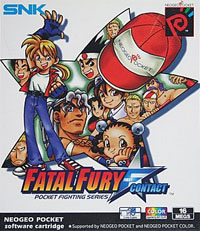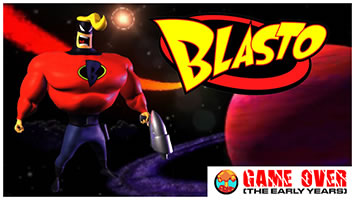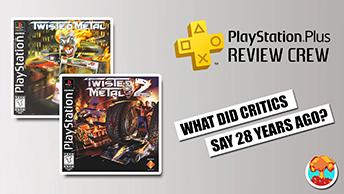- CLASSIC MAGAZINES
- REVIEW CREW
A show recapping what critics thought back
when classic games first came out! - NEXT GENERATION'S BEST & WORST
From the worst 1-star reviews to the best
5-stars can offer, this is Next Generation! - NINTENDO POWER (ARCHIVE)
Experience a variety of shows looking at the
often baffling history of Nintendo Power! - MAGAZINE RETROSPECTIVE
We're looking at the absolutely true history of
some of the most iconic game magazines ever! - SUPER PLAY'S TOP 600
The longest and most ambitious Super NES
countdown on the internet! - THEY SAID WHAT?
Debunking predictions and gossip found
in classic video game magazines! - NEXT GENERATION UNCOVERED
Cyril is back in this spin-off series, featuring the
cover critic review the art of Next Generation! - HARDCORE GAMER MAGAZING (PDF ISSUES)
Download all 36 issues of Hardcore Gamer
Magazine and relive the fun in PDF form!
- REVIEW CREW
- ELECTRONIC GAMING MONTHLY
- ELECTRONIC GAMING MONTHLY RANKS
From Mario to Sonic to Street Fighter, EGM
ranks classic game franchises and consoles! - ELECTRONIC GAMING MONTHLY BEST & WORST
Counting down EGM’s best and worst reviews
going year by year, from 1989 – 2009! - ELECTRONIC GAMING BEST & WORST AWARDS
11-part video series chronicling the ups and
downs of EGM’s Best & Worst Awards!
- ELECTRONIC GAMING MONTHLY RANKS
- GAME HISTORY
- GAME OVER: STORY BREAKDOWNS
Long-running series breaking down game
stories and analyzing their endings! - A BRIEF HISTORY OF GAMING w/ [NAME HERE]
Real history presented in a fun and pithy
format from a variety of game historians! - THE BLACK SHEEP
A series looking back at the black sheep
entries in popular game franchises! - INSTANT EXPERT
Everything you could possibly want to know
about a wide variety of gaming topics! - FREEZE FRAME
When something familiar happens in the games
industry, we're there to take a picture! - I'VE GOT YOUR NUMBER
Learn real video game history through a series
of number-themed episodes, starting at zero! - GREAT MOMENTS IN BAD ACTING
A joyous celebration of some of gaming's
absolute worst voice acting!
- GAME OVER: STORY BREAKDOWNS
- POPULAR SHOWS
- DG NEWS w/ LORNE RISELEY
Newsman Lorne Riseley hosts a regular
series looking at the hottest gaming news! - REVIEW REWIND
Cyril replays a game he reviewed 10+ years
ago to see if he got it right or wrong! - ON-RUNNING FEUDS
Defunct Games' longest-running show, with
editorials, observations and other fun oddities! - DEFUNCT GAMES QUIZ (ARCHIVE)
From online quizzes to game shows, we're
putting your video game knowledge to the test!- QUIZ: ONLINE PASS
Take a weekly quiz to see how well you know
the news and current gaming events! - QUIZ: KNOW THE GAME
One-on-one quiz show where contestants
find out if they actually know classic games! - QUIZ: THE LEADERBOARD
Can you guess the game based on the classic
review? Find out with The Leaderboard!
- QUIZ: ONLINE PASS
- DEFUNCT GAMES VS.
Cyril and the Defunct Games staff isn't afraid
to choose their favorite games and more! - CYRIL READS WORLDS OF POWER
Defunct Games recreates classic game
novelizations through the audio book format!
- DG NEWS w/ LORNE RISELEY
- COMEDY
- GAME EXPECTANCY
How long will your favorite hero live? We crunch
the numbers in this series about dying! - VIDEO GAME ADVICE
Famous game characters answer real personal
advice questions with a humorous slant! - FAKE GAMES: GUERILLA SCRAPBOOK
A long-running series about fake games and
the people who love them (covers included)! - WORST GAME EVER
A contest that attempts to create the worst
video game ever made, complete with covers! - LEVEL 1 STORIES
Literature based on the first stages of some
of your favorite classic video games! - THE COVER CRITIC
One of Defunct Games' earliest shows, Cover
Critic digs up some of the worst box art ever! - COMMERCIAL BREAK
Take a trip through some of the best and
worst video game advertisements of all time! - COMIC BOOK MODS
You've never seen comics like this before.
A curious mix of rewritten video game comics!
- GAME EXPECTANCY
- SERIES ARCHIVE
- NINTENDO SWITCH ONLINE ARCHIVE
A regularly-updated list of every Nintendo
Switch Online release, plus links to review! - PLAYSTATION PLUS CLASSIC ARCHIVE
A comprehensive list of every PlayStation
Plus classic release, including links! - RETRO-BIT PUBLISHING ARCHIVE
A regularly-updated list of every Retro-Bit
game released! - REVIEW MARATHONS w/ ADAM WALLACE
Join critic Adam Wallace as he takes us on a
classic review marathon with different themes!- DEFUNCT GAMES GOLF CLUB
Adam Wallace takes to the links to slice his way
through 72 classic golf game reviews! - 007 IN PIXELS
Adam Wallace takes on the world's greatest spy
as he reviews 15 weeks of James Bond games! - A SALUTE TO VAMPIRES
Adam Wallace is sinking his teeth into a series
covering Castlevania, BloodRayne and more! - CAPCOM'S CURSE
Adam Wallace is celebrating 13 days of Halloween
with a line-up of Capcom's scariest games! - THE FALL OF SUPERMAN
Adam Wallace is a man of steel for playing
some of the absolute worst Superman games! - THE 31 GAMES OF HALLOWEEN
Adam Wallace spends every day of October afraid
as he reviews some of the scariest games ever! - 12 WEEKS OF STAR TREK
Adam Wallace boldly goes where no critic has
gone before in this Star Trek marathon!
- DEFUNCT GAMES GOLF CLUB
- DAYS OF CHRISTMAS (ARCHIVE)
Annual holiday series with themed-episodes
that date all the way back to 2001!- 2015: 30 Ridiculous Retro Rumors
- 2014: 29 Magazines of Christmas
- 2013: 29 Questionable Power-Ups of Christmas
- 2012: 34 Theme Songs of Christmas
- 2011: 32 Game Endings of Christmas
- 2010: 31 Bonus Levels of Christmas
- 2009: 30 Genres of Christmas
- 2008: 29 Controls of Christmas
- 2007: 34 Cliches of Christmas
- 2006: 33 Consoles of Christmas
- 2005: 32 Articles of Christmas
- 2004: 31 Websites of Christmas
- 2003: 29 Issues of Christmas
- 2002: 28 Years of Christmas
- 2001: 33 Days of Christmas
- NINTENDO SWITCH ONLINE ARCHIVE
- REVIEW ARCHIVE
- FULL ARCHIVE
The Ballad of the Portable Launch Line-Up

This girl really wanted to give me a Vita for Christmas, but evil Sony got in the way!
Although less common, handheld system launches can also be an exhilarating experience. Just ask anybody eager to pick up Sony's PlayStation Vita. With close to two dozen games ready at launch, Sony has one of the most robust line-ups in modern history. From racing (wipEout 2048) to action (Uncharted) to fighting (Ultimate Marvel vs. Capcom), the Vita seems to have most genres covered.
While Sony seems to have the line-up firmly in grasp, that hasn't always been the case when launching a handheld system. To help put the current portable releases in context, we have decided to take a look at the past. Join us as we take a tour of the classic handheld game systems and the launch line-ups that defined them. Which is the best?
Game Boy
[ Company: Nintendo | Release: April 21, 1989 | Price: $89.99 ]
[ Company: Nintendo | Release: April 21, 1989 | Price: $89.99 ]

What Worked: With the exception of the Game & Watch and Tiger's mediocre LCD games, Nintendo was the first to offer a portable game system as ambitious as the Game Boy. It was big, clunky and lacking a color screen, but that wasn't going to keep eager gamers away from this important system launch. Thankfully early adopters were greeted with a surprisingly strong line-up of games, including a black and white Super Mario adventure.
Unaware by how big the game would eventually become, Nintendo opted to include Tetris as a free pack-in game. While it's true the company definitely put their best foot forward, the overwhelming success of Tetris easily overshadowed the rest of the launch line-up. The one-two punch of Mario and Tetris was enough to convince the public that the Game Boy was the system for them.


Bottom Line: Nintendo came out of the gate with a safe line-up, headlined by Super Mario Land. As it turns out, Tetris was the game that had the bigger impact. The other games ranged from forgettable to insultingly bad. There's a reason nobody has ever asked you to play Baseball on the Game Boy. Even with a few questionable titles, Tetris was strong enough to raise the Game Boy's grade. (B+)
Lynx
[ Company: Atari | Release: October, 1989 | Price: $179.99 ]
[ Company: Atari | Release: October, 1989 | Price: $179.99 ]

What Worked: Atari decided to go a decidedly different route when launching the Lynx. Of the four games released alongside this 16-bit color portable, only one of them had a familiar name. Eventually Atari would manage to port several prominent arcade games (including Ninja Gaiden and S.T.U.N. Runner), but the early days of the the Lynx were bleak. The big push seemed to be for California Games, a port of the popular Epyx franchise. The mini-game collection did a good job of showing gamers the difference between Atari's color handheld and the black & white Game Boy.
The big surprise at launch was Blue Lightning, one of the system's best reviewed games. In fact, the game was so popular that Atari would eventually release a follow-up on the ill-fated Jaguar CD. Who wants a cheesy sports mini-game collection when you can speed through a 3D environment shooting down airplanes and saving the day? The moment you saw the raw power of the Lynx it was near impossible to go back to Nintendo's handheld.


Bottom Line: While Blue Lightning was impressive for the time, it isn't enough to make up for an otherwise disappointing launch line-up. Neither Electrocop or Gates of Zendocon are worth remembering and California Games gets old quick. Still, the games did an excellent job of showing off the power of the Lynx.
Game Gear
[ Company: Sega | Release: April 26, 1991 | Price: $149.99 ]
[ Company: Sega | Release: April 26, 1991 | Price: $149.99 ]

What Worked: With Sonic the Hedgehog still months away and a general lack of interest in Alex Kidd, Sega was left to go with a virtual unknown mascot when launching the Game Gear. The character in question? He's just this guy named Mickey Mouse. While Disney's main mouse doesn't have the same impact these days, in 1991 it was a strong argument for Sega's first handheld. Genesis owners had been swooning over their own version of Castle of Illusion, so it was easy to see why so many people were excited about the shrunk down 8-bit platformer.
Beyond Castle of Illusion, Sega decided to load the deck with a number of interesting franchises. Columns was just starting to gain traction on the Genesis when it hit the Game Gear. The same goes for Super Monaco GP, a 16-bit game that managed to earn a couple of 10s

What Didn't: It was certainly disappointing that the three best games at launch were nothing more than 8-bit ports of popular Genesis games. Also

Bottom Line: Sega tried to duplicate Nintendo's success with their own portable puzzle game. Too bad Columns isn't in the same league as Tetris. On the other hand, there were a few worthwhile games to make you forget that Psychic World is a real thing. The real star of this launch is Mickey Mouse, which says all you need to know about the U.S. launch of the Game Gear.
Virtual Boy
[ Company: Ninetndo | Release: August 14, 1995 | Price: $179.99 ]
[ Company: Ninetndo | Release: August 14, 1995 | Price: $179.99 ]

What Worked: Yet again, Nintendo decided to launch with a Mario game. Unfortunately, the Mario game in question involved a lot of tennis playing. This was a safe line-up, featuring a futuristic shooter, a futuristic boxing game, a futuristic pinball game and Mario playing tennis. That wasn't exactly the line-up gamers were clamoring for, but when it came to the Virtual Boy, Nintendo didn't do a whole lot of listening to what the consumer wanted.
What Didn't: Even if Nintendo had magically reduced the price from $179.99 down to a more manageable $99.99, that still wouldn't have made-up for the horrendous launch titles. All of these games were interesting to look at in the

There's no excuse for how bad these games turned out. Nintendo knows a thing or two about making an amazing 3D shooter as they had just released StarFox. And it's not just flying games, Nintendo also knows how

Bottom Line: It's a $180 portable game system ... and it's not even portable! Even if you can get over the high price and non-stop headaches, that still leaves you with no must-have launch games. You're better off playing superior versions of all these games on other Nintendo platforms. And best of all, no matter how long you play the Super NES, it's not going to make you go blind.
Neo Geo Pocket Color
[ Company: SNK | Release: 1999 | Price: $69.99 ]
[ Company: SNK | Release: 1999 | Price: $69.99 ]

What Worked: The Neo Geo Pocket Color has the destinction of having a new perfect launch line-up. While you may not immediately run out and buy all five of these early games, there isn't a single one that I wouldn't recommend to somebody. Even the sports games (the Game Boy's vulnerability) are shining examples of how to properly develop handheld games. Couple the strong line-up with the low asking price for the system (a mere $70) and you have one of the most successful launches in handheld gaming history. On paper, that is.
We can argue all day long about how successful the Neo Geo Pocket Color was, but there's one thing that's for sure: The five launch games are incredible. Fatal Fury: First Contact manages to outdo the mediocre arcade game by a mile and Metal Slug: First Mission pumps new life into the repetitive franchise. This was a line-up that set the scene for SNK's first portable. From here on out you should expect shrunken arcade hits, exciting puzzlers and the kinds of sports games you've come to expect from the Neo Geo cabinets. Where do I sign up?


Bottom Line: SNK stacked the deck in their favor. Not only did they release a couple of must-have sports games, but they made better versions of both Metal Slug and Fatal Fury. The Neo Geo Pocket Color proved that you could make a deep and engaging fighting game on a handheld game system. Best of all, SNK opted for a puzzle game that didn't feature even one falling block.






HOME |
CONTACT |
NOW HIRING |
WHAT IS DEFUNCT GAMES? |
NINTENDO SWITCH ONLINE |
RETRO-BIT PUBLISHING
Retro-Bit |
Switch Planet |
The Halcyon Show |
Same Name, Different Game |
Dragnix |
Press the Buttons
Game Zone Online | Hardcore Gamer | The Dreamcast Junkyard | Video Game Blogger
Dr Strife | Games For Lunch | Mondo Cool Cast | Boxed Pixels | Sega CD Universe | Gaming Trend
Game Zone Online | Hardcore Gamer | The Dreamcast Junkyard | Video Game Blogger
Dr Strife | Games For Lunch | Mondo Cool Cast | Boxed Pixels | Sega CD Universe | Gaming Trend
Copyright © 2001-2025 Defunct Games
All rights reserved. All trademarks are properties of their respective owners.
All rights reserved. All trademarks are properties of their respective owners.
























